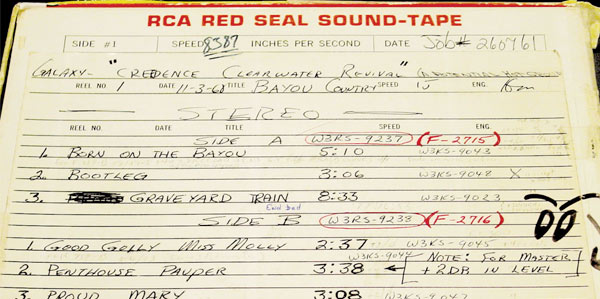Updating the Past Part III
We’re on a quest to convert the output from an analog source to a digital copy. The central piece of hardware in this process is a great quality analog to digital convertor. Whenever you are dealing with converting analog signals into digital signals, the issue of level matching and gain stages comes into play. The basic idea is to maintain the fidelity of the original analog format in the new digital version. This means that we must have some sort of calibration tones to set the input levels of the ADC before beginning the transfer process.
Professional studios have largely abandoned analog tape machines but there are still some stalwarts that offer a vintage sound to their clients. And of course, before PCM digital technology made its way into the record production flow, we all used analog multitrack decks and 2.0 channel stereo mixdown machines. As a budding second engineer at Mama Jo’s Studio in North Hollywood, California, it was my job to align every track of every tape machine in the studio prior to every session. This process of calibration is something I still teach my students in spite of the fact that they rarely encounter analog signals. The concept of analog signal calibration is still relevant.
The concept is to ensure that the entire frequency spectrum of the output of the recording console is captured at the correct amplitude AND reproduced with as few modifications/degradations as possible. If a 1 kHz tone at 0 VU (.775 volts) is presented to a track on your analog deck then we want 1 kHz to be output at the same level. And the same would go for the entire frequency spectrum.
There are two steps to this alignment procedure. The first is to playback a variety of reference tones from a commercially made alignment tape. These tapes are made by several companies and are first generation master tapes. The tape is put on the deck to be calibrated and the output levels verified. If the reference tape contains a 1 kHz tone at 0 VU (185 nanoWebers/meter in magnetic flux terms) then we adjust the reproduce output level to 0 VU. Likewise, we adjust the High Frequency and Low Frequency reproduce EQ knobs to 0 VU when a 15 kHz or 100 Hz tone is played back from the reference tape. This takes care of the reproduction side of the deck.
The record alignment is a little more complicated because of the Bias alignment (but we’re not going to talk about this here), but essentially what we do is have the console oscillator output the 1 kHz (and other tones) and record them on the type of tape that is to be used during the sessions. You record the tones and put the machine in output so that you are seeing the signal after its been recorded on the record head and then reproduced by the head (and electronics that you just calibrated). By adjusting the RECORD level so that the output level is 0 VU, you know that the record level is appropriately set.
Once you’ve completed the alignment procedure for ALL tracks on the deck, you then record calibration tones at the head of the new session tapes. First comes 1 kHz followed by 15 kHz and then 100 Hz. These tones should accompany every reel-to-reel master. They are used to calibrate any machine that will be used to play that tape. You have captured the condition of the session machine on every other machine used in the future.
What does this have to do with converting a vinyl LP or analog tape to digital? Because we want to know the reference levels used in the creation of that piece of vinyl or tape. If there were alignment tones at the head of a source tape or vinyl LP, then all you would have to do is play that tone and set your ADC to that reference. But unfortunately it’s not that simple in the consumer world because nobody bothered to put alignment tones on the distributed copies.
We have to audition the analog source and search for the loudest moment. That is the amplitude that we want to capture with all of the available bits in a PCM encode. If you record with too little level, it’s possible to lose dynamics and if you record too hot to the new digital format, you risk overloads and distortion.
To be continued…


Hi Mark,
I am looking forward to your continuing the “Updating the Past” series.